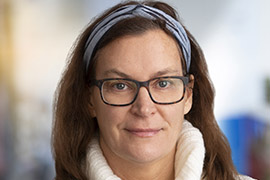Time to plan your proposal for KAW project grants 2022
With an annual funding of around SEK 2,0 billion in recent years the Knut & Alice Wallenberg foundation is the largest private funder of scientific research in Sweden and one of the largest in Europe. The call for KAW projects 2022 is now open. Learn about the process for applying and the support for writing a good proposal.

Viktoria Halltell, Senior Research advisor at KTH Research Support Office (RSO) is the contact person at KTH for matters concerning the Wallenberg foundations.
What needs to be addressed in the proposal?
- In the last call there was a stronger requirement for gender balance and KTH had a high increase in the number of female PI:s (Principal Investigators) that applied. As in previous years, the projects should have 2-5 participants who need to show how they will collaborate on a coherent research question and how their complementary competencies will gives new possibilities to do this, explains Viktoria Halltell.
- My standard advice is to read the call text carefully and use the possibility of our team at RSO to get feedback on your proposal. It is a good idea to start now and work on a draft the coming months. A new feature is that the project budget is a bit lower, between 15-30 million SEK. The duration can still be of three up to five years.
New routine to support KTH researchers even better
The grants are very prestigious and to support KTH researchers even better a new routine was developed for the 2020 call. It will now be put in place for the first time and the timeline looks like this:
- Send a three-page pre-proposal to wallenbergfoundations@kth.se at the latest 10 September (midnight). An approval from your Head of department should be sent to the same email address with the same deadline. This is to ensure that the school will co-fund the project if the proposal is granted, explains Viktoria. Then a panel of six senior researchers, together with the KTH Vice President for Research, Annika Stensson Trigell, evaluates and ranks all pre-proposals. The priority list is handed over to the President of KTH who makes the final decision on which researchers are selected to submit a full proposal.
What happens after 10 September?
By 25 October all PI:s who submitted pre-proposals will get notifications on whether they can go forward and write a full length proposal – or if the pre-proposal was rejected. In January, Viktoria ensures that all the supporting documents are in order and that KTH President Sigbritt Karlsson signs the letters of support that need to be attached with the proposal. The final deadline for the e-application is 1 February 2022.
Time to celebrate or try again
There is a long wait until October 2022 when the approved grants are released. Initially, the researchers, Viktoria and the Press team at KTH are notified but restricted by an embargo to not publish or share until a fixed date for publication.
For those who did not make it there is always the opportunity to try again, but with another project idea. In some rare occasions, the Foundation add a note with a rejection that the project was not able to get funding within the set budget but could be considered if more funding becomes available. It is always worth trying!
